Contact Paper Stencils
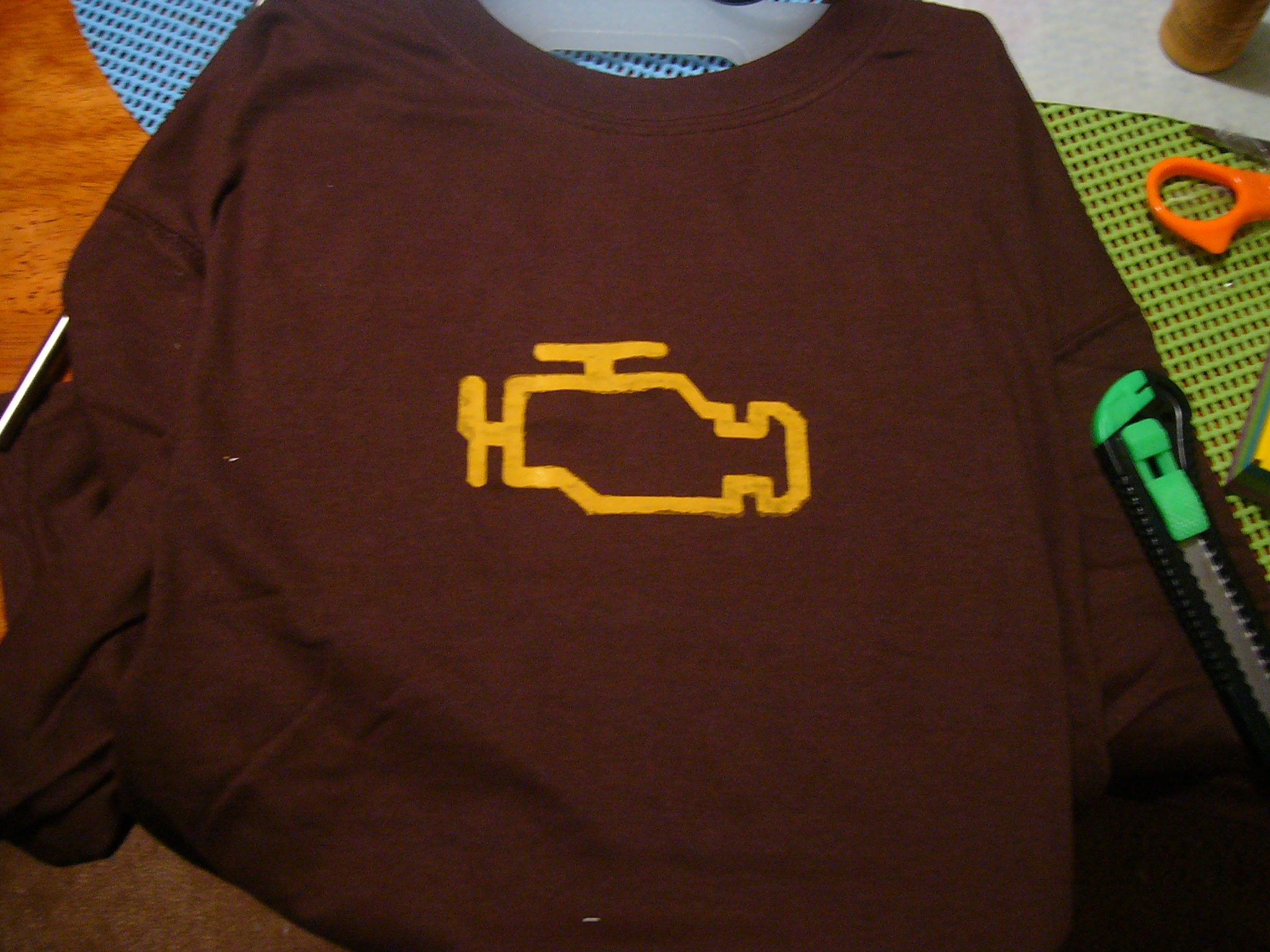
Last year I had the urge to print my own T-shirt. I couldn't find photo emulsion locally and I didn't want to pay to have a large quantity shipped. Instead, I made a stencil (with an island) as a cheap substitute.
Yes, that's a check engine light. I now own a VW and was told that I'd have check engine lights every 1000 miles.... It's been a little bit less than 10,000 miles now... no light. I'm still amused by the low washer fluid light and alarm :)
My apologies for the low quality pictures....
Yes, that's a check engine light. I now own a VW and was told that I'd have check engine lights every 1000 miles.... It's been a little bit less than 10,000 miles now... no light. I'm still amused by the low washer fluid light and alarm :)
My apologies for the low quality pictures....
Tools and Materials
Contact Paper (the stuff with a sticky back) -- shelf paper works too.
Fabric Paint
A bit of cardboard or plastic or something to prevent the paint from bleeding through the back
Something to push paint around evenly (a scrip bit of cardboard will work)
Razor knife and cutting board
Fabric Paint
A bit of cardboard or plastic or something to prevent the paint from bleeding through the back
Something to push paint around evenly (a scrip bit of cardboard will work)
Razor knife and cutting board
Find an Image and Cut Stencil
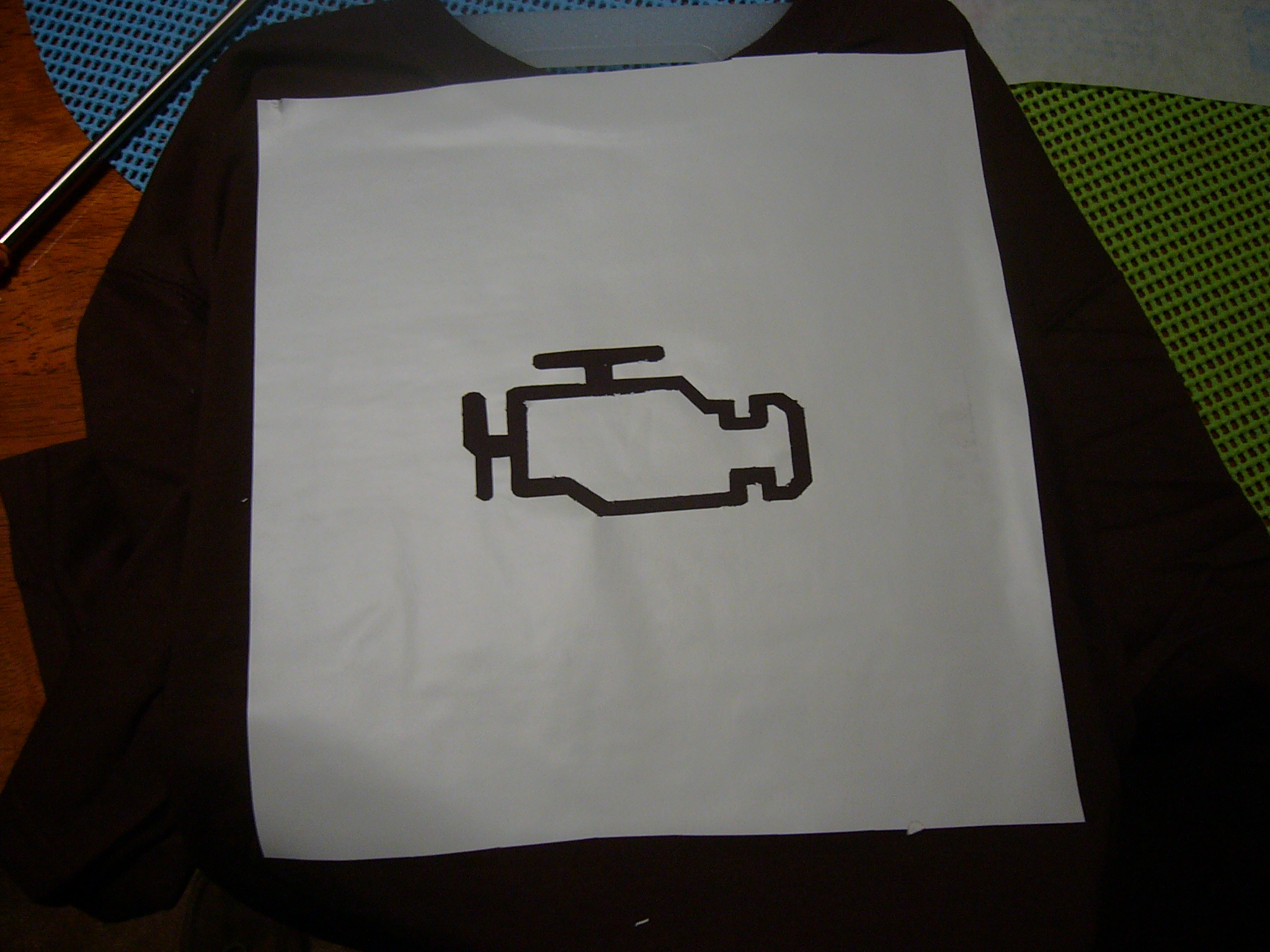
The image I'll be making is a common check engine light. Carefully and patiently cut your stencil.
Once the stencil is cut to your liking, remove the paper backing and stick the contact paper on your shirt.
Once the stencil is cut to your liking, remove the paper backing and stick the contact paper on your shirt.
Apply Paint
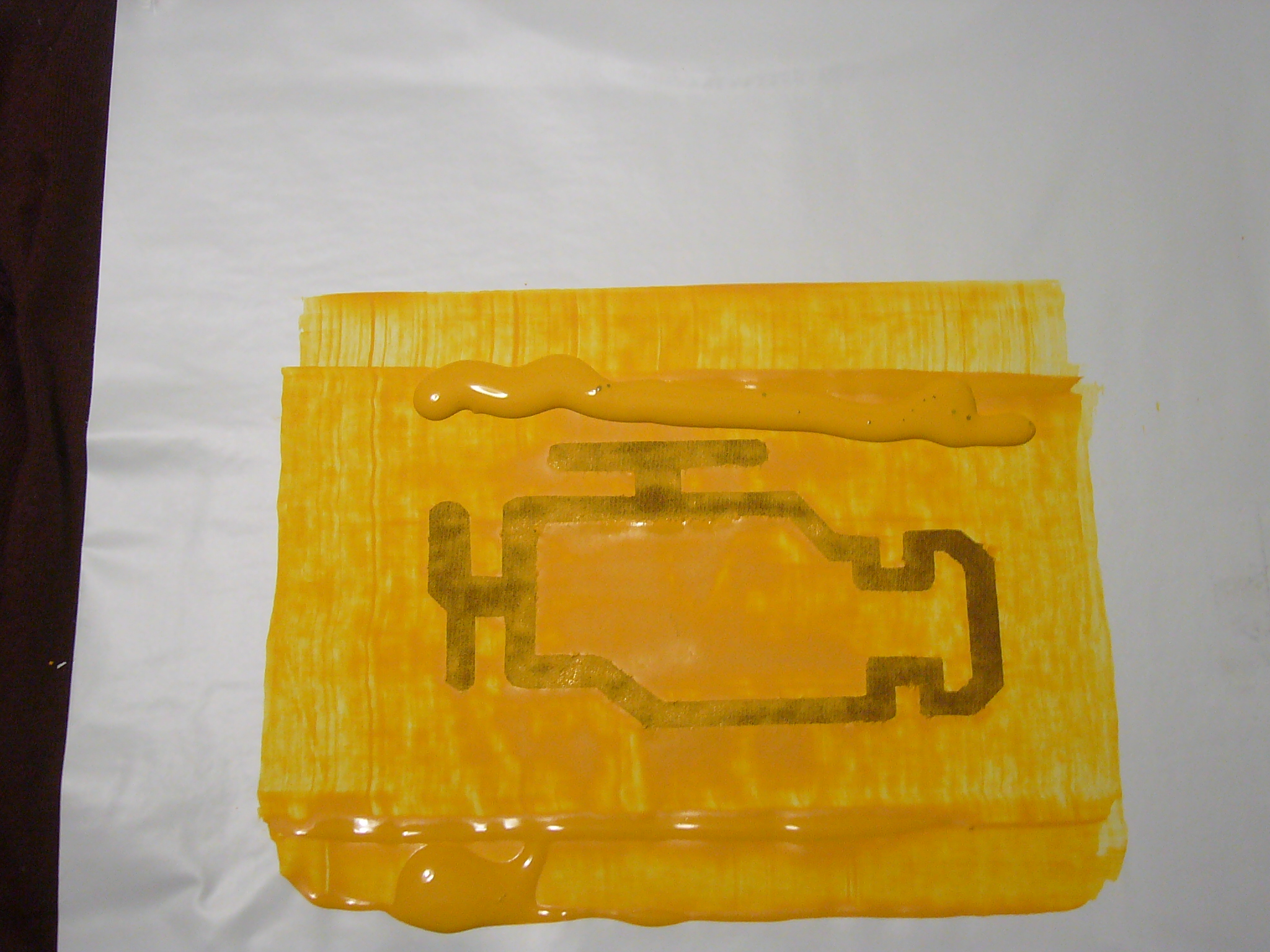
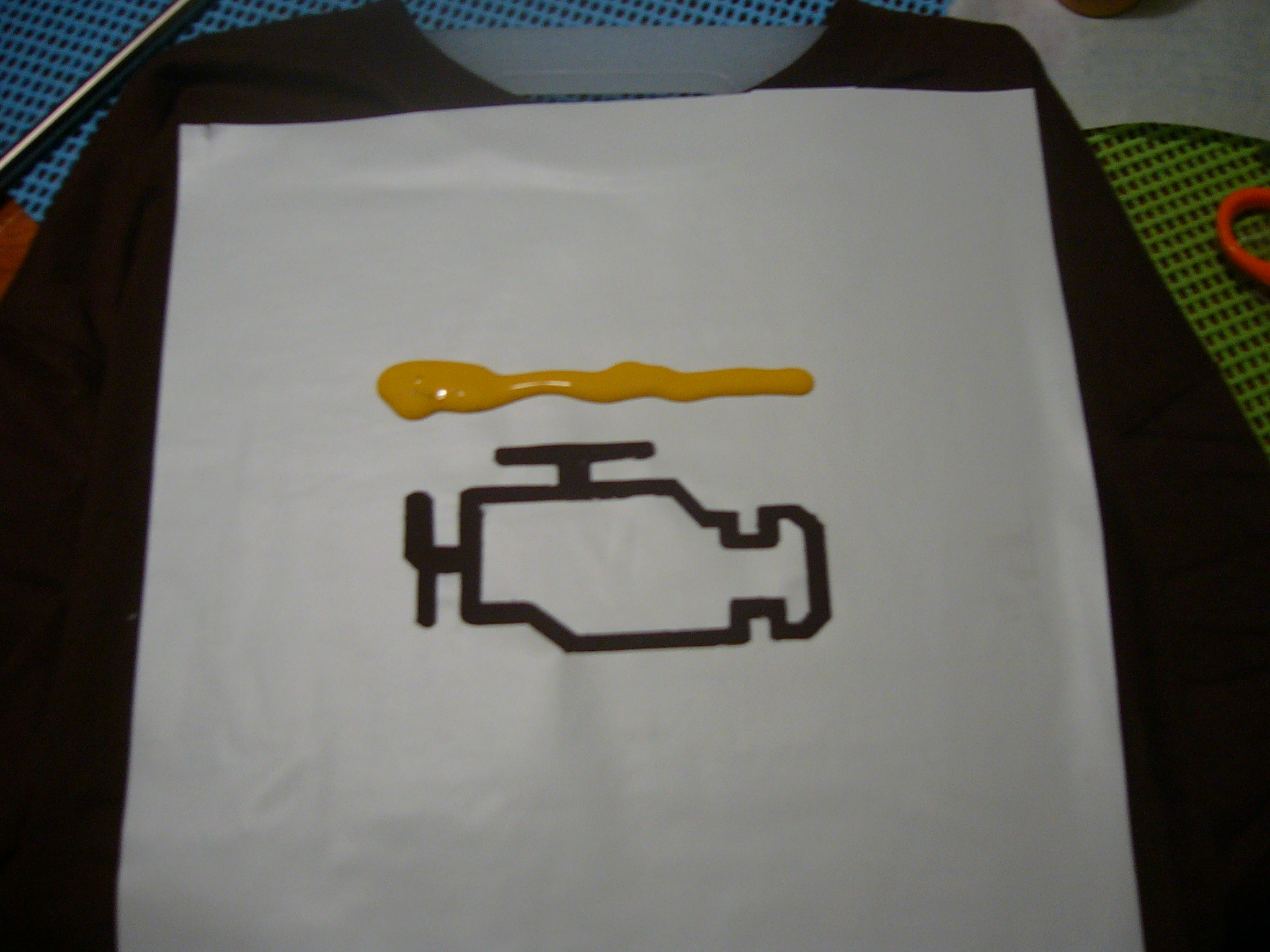
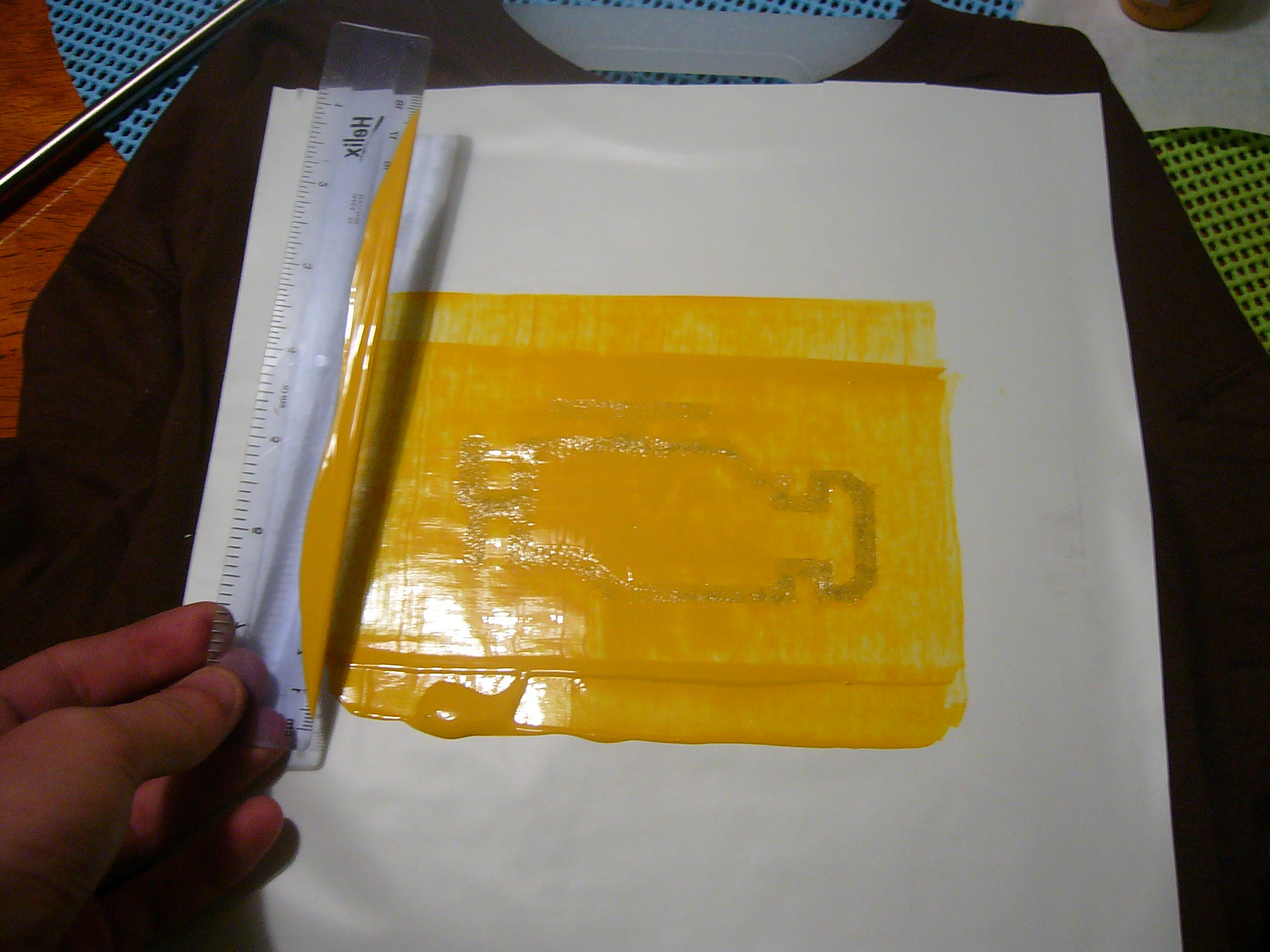
Apply a line of paint above the stencil. Using a straight bit of cardboard (or in my case a plastic ruler) - drag the paint over your stencil.
Ideally, you only want one coat of paint. But due to my lack of experience, I think I applied too much pressure and didn't leave enough paint behind. So I went for a second coat.
Ideally, you only want one coat of paint. But due to my lack of experience, I think I applied too much pressure and didn't leave enough paint behind. So I went for a second coat.
Dry and Remove Stencil
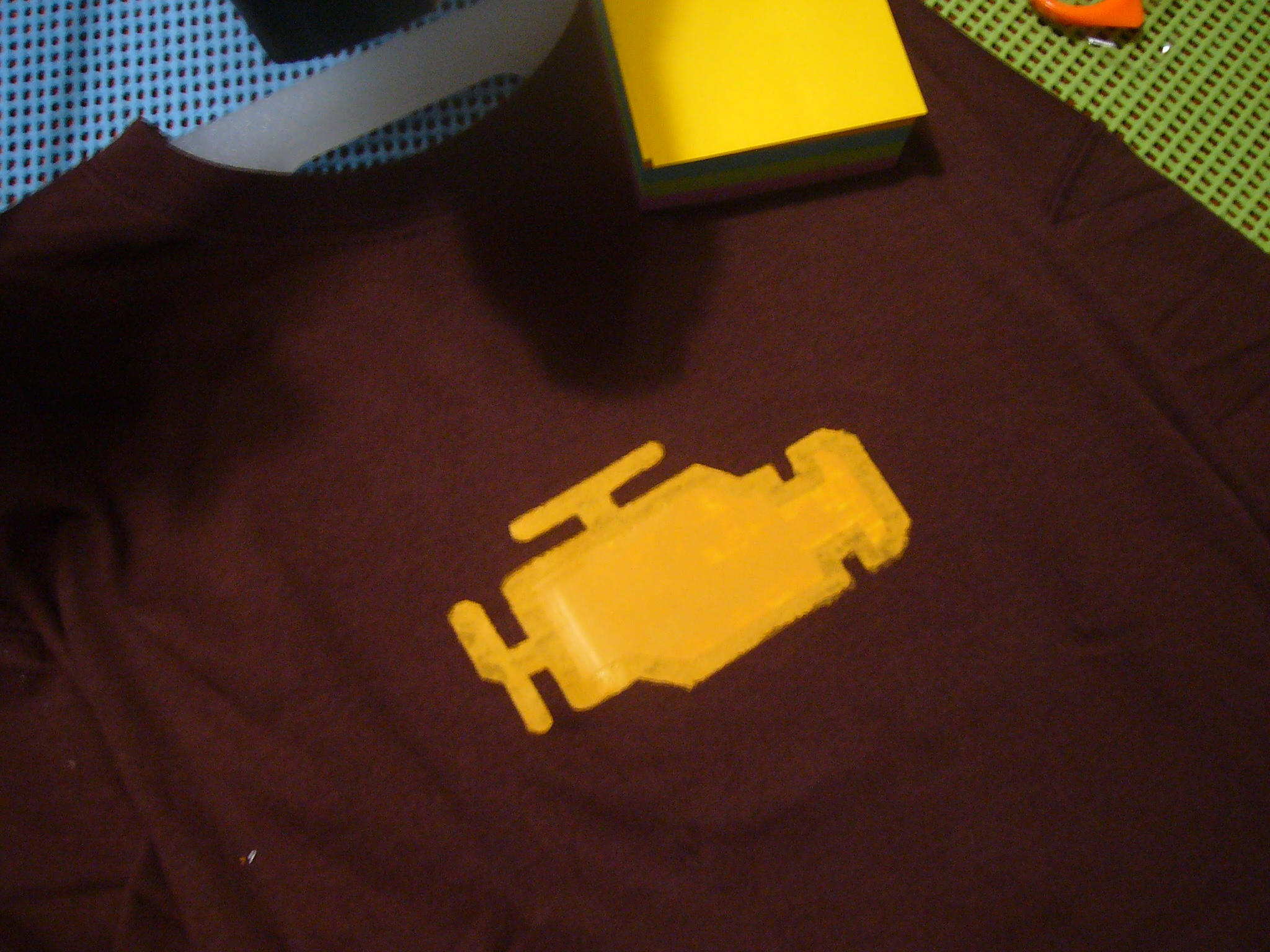
Allow the paint to dry a little. Then pull the stencil off and allow to dry completely. I used a blow dryer to quicken the process. They say good things come to those that wait.... But Lincoln said that the good things come, but only things left by those who hustle (who knows, maybe I'm just justifying my impatient tendencies at the time) :P
Contact paper is not the best solution for crisp clean edges. But it gives fair results as a cheap and quick method to make a design.
Contact paper is not the best solution for crisp clean edges. But it gives fair results as a cheap and quick method to make a design.